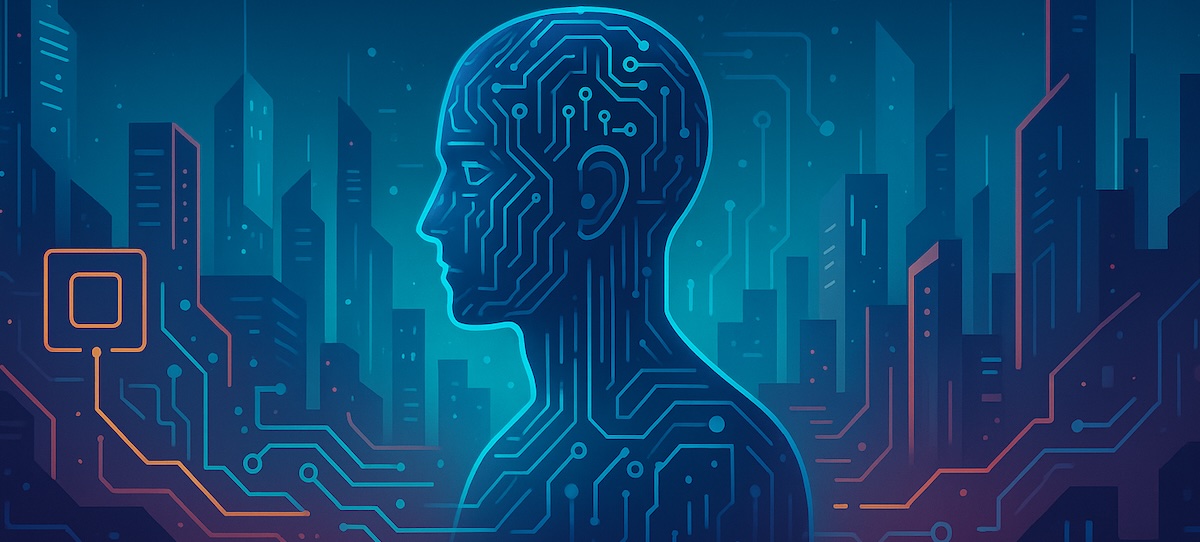By mid-2025, it’s no surprise that most of the software applications we use daily have started integrating new features powered by AI. From email clients that help you draft responses to design tools that generate visual content, AI is reshaping the user experience across industries. This shift reflects not only the rapid advancements in the field but also a growing demand for smarter, more intuitive digital experiences.
This trend is driven by increased access to various large language models (LLMs), which are becoming more powerful and accurate than ever before. With open source and commercial LLMs now widely available through APIs and integrated platforms, developers and organizations of all sizes can experiment with and deploy AI capabilities in ways that were unthinkable just a few years ago. These models are not only better at understanding language and generating content—they’re also becoming increasingly adaptable to specific domains and business needs.
AI models are becoming more powerful and capable of more tasks, enabling more applications. More people and teams leverage AI to increase productivity, create economic value, and improve quality of life.
Chip Huyen, “AI Engineering” book
From the perspective of software developers, this AI-driven shift implies a growing responsibility: we must deepen our understanding of what it takes to build the kinds of applications that users and businesses increasingly rely on. As expectations evolve, our skill sets must follow. AI is no longer a distant, experimental layer—it’s becoming a core part of modern software architecture. As such, we now need to factor AI capabilities into the early stages of system design, treating them as a crucial layer of what we used to call the “full stack”.
While AI-related components are becoming more tightly integrated into the broader software development process, it’s helpful to adopt a distinct lens through which to examine them. That’s where the term AI Engineering comes into play, as defined by Chip Huyen in her book “AI Engineering.” It describes a dedicated discipline focused on effectively applying and operationalizing foundation models—like large language models and other pre-trained systems—to deliver real-world value. This field emphasizes not just technical implementation, but also the infrastructure, monitoring, and iteration practices required to make AI products reliable and scalable.
It’s worth noting that AI Engineering occupies a space between traditional machine learning engineering and the broader discipline of software development—but in practice, it often aligns more closely with the latter. In many cases, the need for deep machine learning expertise emerges only in later stages of an application’s lifecycle, when fine-tuning or specialized behavior is required. Even then, the approach is typically built on top of existing foundation models, which makes the process significantly more accessible to experienced software developers—even those without a formal background in ML. This accessibility is part of what makes AI Engineering such an exciting and rapidly evolving domain.
What AI Engineering Involves
To better understand what AI Engineering truly entails, it’s helpful to identify the skills and areas of knowledge an individual must develop to be considered proficient in this discipline.
You’re likely already familiar with some of the more talked-about topics in the space: Prompt Engineering, Retrieval-Augmented Generation (RAG), Agentic AI systems, and Fine-tuning. These techniques—and emerging concepts like Model Context Protocol—are indeed essential tools for making the most out of today’s foundation models and seamlessly integrating them into production-ready systems.
However, true competence in AI Engineering goes beyond just mastering these trending topics. It also requires a broader set of capabilities, including system design thinking, responsible model usage, operational know-how, and an understanding of how to evaluate, monitor, and continuously improve AI-based features. In the following sections, we’ll explore some of these lesser-discussed, yet equally critical, aspects of the field.
Navigating the Model Landscape
The number of available foundation models continues to grow rapidly. From well-known commercial options like ChatGPT, Claude, Gemini, and Perplexity, to a flourishing ecosystem of open source alternatives, AI engineers today have an unprecedented array of tools at their disposal.
While most of these models excel in general-purpose natural language processing, each has its own strengths and weaknesses depending on the task. Some may perform better for creative writing, while others excel at coding assistance, reasoning, summarization, or multilingual support. Understanding these nuances allows engineers to select the right model for the job, or even combine multiple models to cover different aspects of an application.
It’s also critical to recognize how quickly these models evolve. Capabilities that were considered cutting-edge six months ago may now be seen as baseline. For this reason, staying informed about new releases, benchmarks, and research is an essential habit for any AI engineer committed to building effective, future-proof systems.
Equally important is understanding where large language models (LLMs) fall short or are poorly suited. This can be especially challenging, as these models often appear incredibly capable at first glance—handling a wide variety of queries with apparent ease. However, due to their probabilistic nature, LLMs can struggle with tasks that require deterministic accuracy.
For example, asking a model like ChatGPT to perform precise arithmetic can quickly reveal its limitations. While it might occasionally give the correct answer, it’s not guaranteed to do so consistently, and it lacks the reliability of even a basic calculator. Recognizing these boundaries helps AI engineers design systems that use LLMs where they shine, while delegating other responsibilities to more appropriate tools.
Navigating Tradeoffs in AI Systems
AI Engineering is a space where many of the classic tradeoffs in traditional software engineering reappear—but often in new, AI-specific forms. As we integrate foundation models into real-world systems, we’re required to weigh competing concerns like cost, latency, security, and output quality in more nuanced ways.
One major consideration is the balance between accuracy and cost. More powerful models tend to produce better responses but are also more expensive to run or require access to higher-tier pricing plans. Similarly, there’s a frequent tradeoff between response quality and latency: higher-quality responses often require longer inference times, which can affect the user experience. This means that AI engineers must not only select appropriate models, but also design UI and system interactions that accommodate variable response times—sometimes by setting user expectations or incorporating loading cues.
Security and reliability add another layer of complexity. Since LLMs are probabilistic, they can hallucinate or generate harmful outputs despite guardrails. This unpredictability introduces risk into systems that were once deterministic. As a result, AI engineers need to incorporate safeguards, validation steps, and fallback mechanisms into their applications to mitigate these risks.
Evaluation Pipelines: Measuring What Matters
One area that is often overlooked when implementing AI-powered features is the complexity of testing and quality control in systems that include LLMs.
The stronger AI models become, the higher the potential for catastrophic failures, which makes evaluation even more important. At the same time, evaluating open-ended, powerful models is challenging.
Chip Huyen, “AI Engineering”
With powerful new capabilities come new responsibilities. Among the most critical is the ability to rigorously evaluate how changes to your AI stack affect the broader system. This includes everything from prompt updates and model version switches to inference parameter tweaks or provider migrations.
To manage this complexity, it’s essential to invest in an evaluation pipeline early in the application lifecycle. Without this, teams risk relying on intuition or anecdotal evidence when assessing the impact of changes—an approach that rarely scales well.
In some narrow use cases, such as classification tasks, evaluation can be deterministic and straightforward. But most of the time, particularly in natural language applications, responses can vary in format, tone, and structure. This introduces ambiguity into the evaluation process.
To address that, AI engineers often rely on techniques such as embedding-based similarity scoring, reference-based evaluation, or even model-assisted grading systems—commonly referred to as “AI-as-a-judge”—to assess outputs. These allow for continuous tracking of how well the AI components perform over time.
Fortunately, there is a growing ecosystem of tools designed to support this kind of evaluation. Still, for more nuanced or high-stakes applications, teams may need to develop custom setups to ensure detailed, context-aware assessments. In either case, the evaluation pipeline becomes a foundational pillar of any robust AI system.
The Rise of New Architectures
As AI capabilities become core to software applications, we’re beginning to see the emergence of entirely new architectural patterns. Much of this is still in active exploration, driven by the experimental nature of the space. Yet one thing is clear: AI engineers will be increasingly responsible for designing and orchestrating the interactions between AI-native components—such as RAG pipelines, autonomous agents, or Model Context Protocol (MCP) modules—and the broader system.
Beyond the models themselves, there’s a growing need for surrounding infrastructure. This includes dedicated components for input sanitization, output validation, safeguard layers, and intelligent routing mechanisms to determine which AI module should handle a given task. These architectural elements are critical in building systems that are not only functional, but also safe, predictable, and maintainable.
A key consideration in this new architecture is memory. While foundation models come equipped with vast internal knowledge, real-world applications often require additional layers of persistence. This may take the form of long-term memory—embedding stores that provide personalized or domain-specific context—or short-term memory, scoped to a user’s session or interaction history. Designing for both is essential for applications that aim to deliver consistent, context-aware behavior over time.
As these architectural patterns continue to evolve, AI engineers will play a central role in shaping best practices and bridging the gap between powerful models and production-ready software.
Conclusion
AI Engineering is redefining how software is built—blending traditional development with the complexities of modern AI systems. As foundation models become central to product experiences, engineers who can integrate them thoughtfully and responsibly will shape the next generation of software. This is more than a new skill set; it’s a shift in how we think about what software can do.
The possibilities ahead aren’t just impressive—they’re extraordinary.
If you’re exploring AI Engineering or looking to build products powered by AI components, feel free to reach out to us. We’d love to hear what you’re working on.
References
Huyen, C. (2024). AI Engineering: Building and Deploying AI Applications. O’Reilly Media.



